While currently among the most poverty-stricken cities in the United States, Detroit once had one of the country’s strongest economies. Tracing its history back to 1701 as a New France fur trading post, the city grew into an automobile mecca during the early-to-mid 20th century and was launched into an era of expedited growth.
During this time, automobile manufacturers like Ford, General Motors and Chrysler employed the majority of Detroit’s residents and prompted a mass migration of Southern workers looking for jobs. However, struggles within the industry led to the closure of many of these factories and, when compounded with other issues the city was facing, led Detroit into a decades-long decline that still affects it to this day.
Detroit’s economic growth began in the 19th century
During the 1800s, Detroit grew into one of the country’s largest commercial hubs. This was largely due to its location along the Great Lakes, which allowed businesses access to global trade. This economic growth led to an influx of wealthy entrepreneurs and businessmen moving to the area, looking to cash in on the city’s reputation.

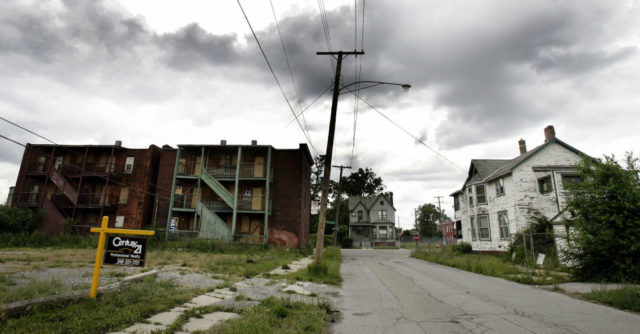
In 1910, Henry Ford of the Ford Motor Company introduced the assembly line to his factory in Highland Park, revolutionizing the manufacturing industry. This new technology allowed for increased mass production and was quickly adopted by his competitors. As a result, Ford is credited as the catalyst for Detroit’s growth and industrialization during the early 20th century.


The growth of Detroit’s auto industry resulted in a rising demand for labor. During the First World War, Ford began hiring African-American workers due to an increasing labor shortage, prompting those living in the Jim Crow South to migrate north and initiating what became known as the “Great Migration.” Between 1900-30, the city’s population ballooned to 1.5 million, a number that continued to grow upon the start of World War II.

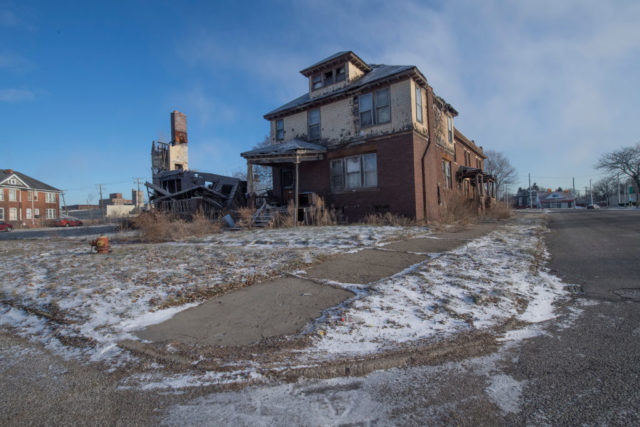
From 1942-45, the production of commercial vehicles was halted in Detroit, as automobile manufacturers were tasked with producing vehicles for use on the battlefield. This included Jeeps, the M5 Stuart Light Tank and B-24 Liberators, all of which saw extensive use by the Allied forces in Europe.
Detroit’s heyday foreshadows its decline
For many, the 1950s and ’60s are considered Detroit’s heyday, as the city was thriving on the success it saw following the Great Depression and the end of WWII. The job security promised by the auto industry meant there was a burgeoning middle class that many felt wasn’t just obtainable by the city’s White population.


However, while the city was experiencing economic success, issues were beginning to appear, largely due to racial tensions between Detroit’s White and Black populations. As people migrated to the city, a housing crisis emerged, and landlords decided to take advantage of the lack of housing by raising the rent of Black residents. This thrust them into poverty, as their wages weren’t enough to pay for their homes and afford the upkeep.


The poverty faced by the Black population was attributed by White homeowners to “individual moral deficiencies,” which increased a desire to preserve segregation in Detroit. This was further escalated by President Franklin Roosevelt‘s New Deal, which attempted to alleviate the housing crisis through the construction of public housing and private, single-family homes, which the White population was against.
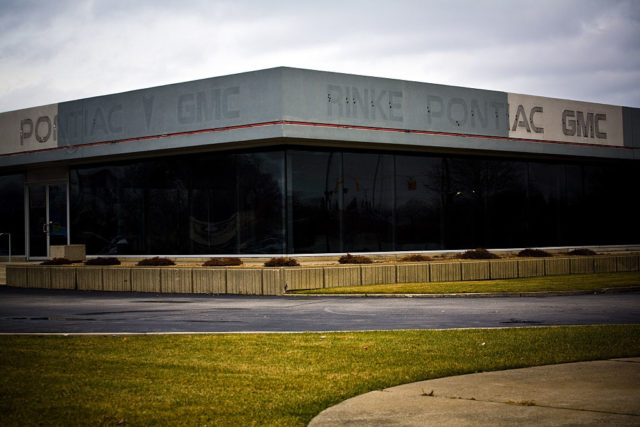

Occurring alongside the increasing racial tensions was an issue that wouldn’t be realized until Detroit was already deep into its decline: a lack of diversity in the city’s economy. Given the success of auto manufacturing, there was less pressure to develop a diverse economy made up of different industries. As such, when facilities moved out of the city, there weren’t jobs waiting for those who found themselves out of work.
Decentralization of the auto industry
The movement of the auto industry out of Detroit began in the 1950s, and was the result of many key events. The first was that the companies were slow to react from international competitors, which lost them market share. As well, they were slow to respond to the need for new fuel-saving technologies, which was exacerbated by increasing gas prices in the 1970s.


To save their companies, stakeholders and management moved factories outside of Detroit and into the surrounding suburbs. They also relocated to “right to work” states that didn’t require non-union members to pay an agency fee to the union. While the immediate effect of this was that thousands of plant workers lost their jobs, the ripple effect saw the closure of neighborhood businesses that thrived off the business of the surrounding factories.

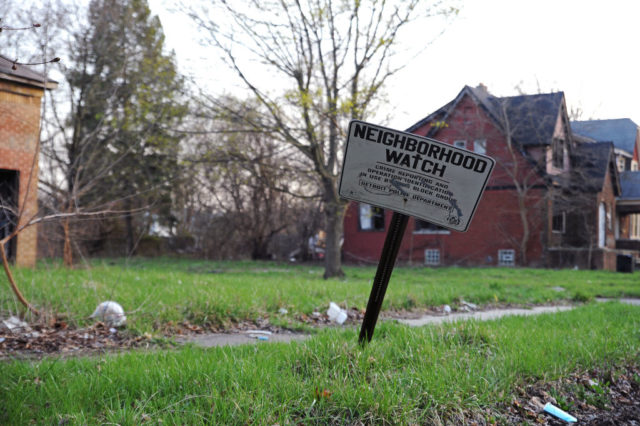
While the hope was that new companies would move into the buildings left abandoned by the automobile industry, this proved to not be the case. Not only was the brown exterior of the locations unattractive, there was also leftover pollution from decades of manufacturing. As such, additional issues, such as a loss in property and wage taxes, meant the city didn’t have enough money to finance new – or repairs to existing – infrastructure.
Additional factors that led to Detroit’s decline
A number of other factors are cited as aiding in Detroit’s decline. Racial tensions came to a head in 1967, when riots resulted in the deaths of 43 people and damage to numerous buildings. In the aftermath, thousands of small businesses shuttered or relocated to safer neighborhoods, something the city was unable to bounce back from.
Just a few years later, Detroit saw the events of its annual “Devil’s Night” increase, from minor pranks to serious criminal activity, such as arson. This escalated for decades, to the point where police warned people to not leave their houses on October 30th.
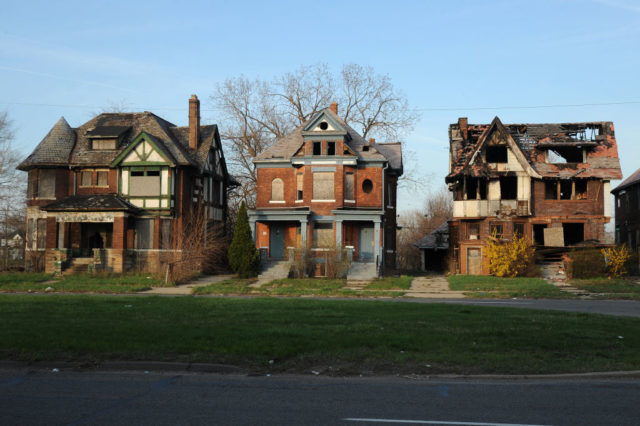

Due to the focus on the city’s auto industry, there was also a lack of efficient transit. Highways were built, in lieu of an efficient public transportation system. This largely had to do with the poor leadership Detroit dealt with over decades, as leaders failed to recognize and adapt to what voters required.


This all led to residents leaving Detroit in search of greener pastures. Between 1950-80, the population dropped by 600,000, and in 2015, the population was just 680,000. Those who remained were largely poorer Black residents who couldn’t afford to move, a struggle only made worse by a lack of employment opportunities.
According to the Census Bureau’s Statistical Abstract of the United States: 2012, the individual poverty rate was at 36.4 percent, while the family rate was around 31.3 percent.


The ever-increasing poverty rate led to a rise in crime, so much so that Detroit was known for having one of the highest rates in the US. Dozens of violent street gangs formed during the 1970s and ’80s, looking to profit from the heroin and crack epidemics. At its peak in 1991, the city’s crime rate saw more than 2,700 violent crimes per 100,000 individuals.
Bankruptcy and revitalization efforts
In July 2013, Detroit declared bankruptcy at a total of $18 billion, allowing for funds to be redirected to infrastructure and services. The city had been in a deep crisis since around 2007, and while General Motors and Chrysler received federal bailouts, Detroit did not and continued to suffer financially, further exacerbating the poverty of residents.


While the city was able to successfully exit bankruptcy in December 2014, Detroit’s reputation had already been damaged. Many of its commercial and residential buildings sat abandoned, leading many to compare the city to a ghost town. The number of empty properties also facilitated the city’s crime rate, as gangs often frequented them.


More from us: Gary, Indiana: The ‘City of the Century’ That Turned Into a Veritable Ghost Town
Today, many still living in Detroit are working to revitalize the city and return it to its former glory. This is largely being financed through public and private investment. As of 2017, the city’s median household income was rising, while the amount of criminal activity recorded was on the decline.
